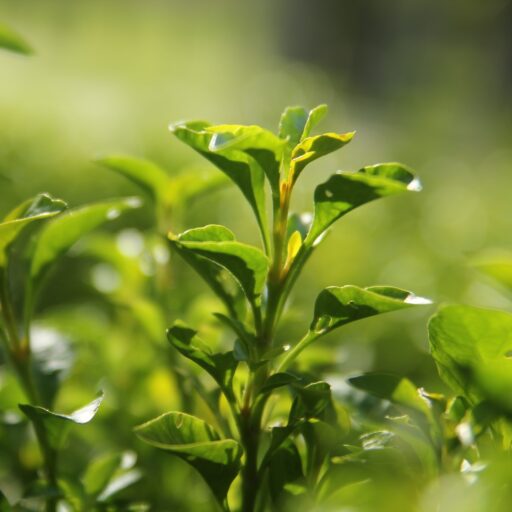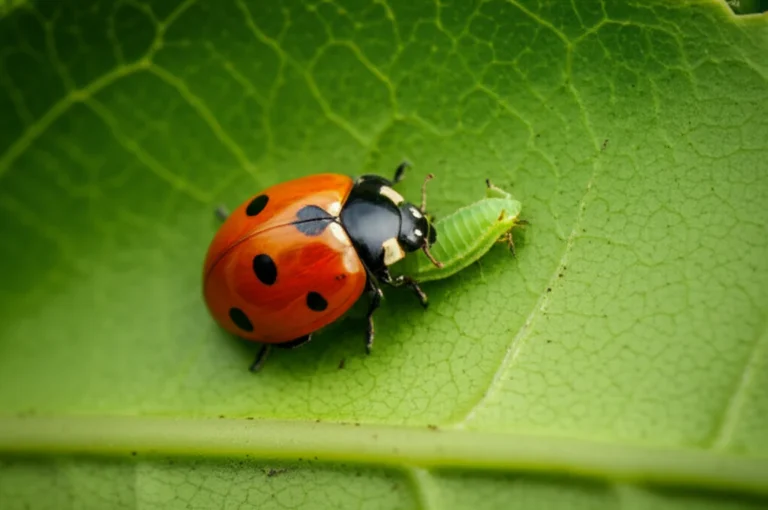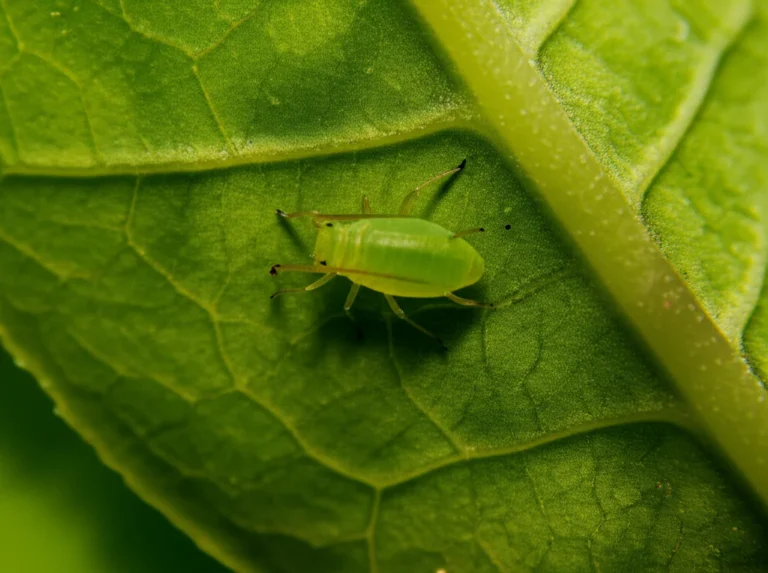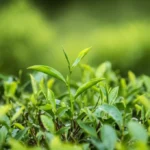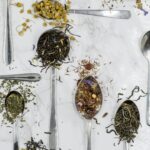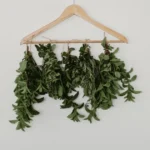Support our educational content for free when you purchase through links on our site. Learn more
Tea Plant Disease Identification: 10 Essential Signs You Can’t Miss! 🍃
Have you ever spotted mysterious spots or strange discolorations on your tea plants and wondered, “Is this a disease or just a quirk of nature?” You’re not alone! At Growing Teas™, we’ve spent years cultivating our own tea and battling the sneaky fungal foes, viral villains, and pesky pests that threaten our beloved Camellia sinensis. In this comprehensive guide, we’ll walk you through the top 10 common tea plant diseases, how to spot them early, and the best expert-backed strategies to keep your tea garden thriving.
Did you know that some AI-powered tools now boast over 95% accuracy in identifying tea leaf diseases just from photos? But before you reach for your phone, we’ll share practical, hands-on tips from our own fields that you can start using today. Plus, stay tuned for our detailed disease identification chart and insider secrets on integrated disease management that combine traditional wisdom with cutting-edge science.
Key Takeaways
- Early and accurate identification of tea plant diseases is critical for maintaining healthy crops and high-quality tea leaves.
- The most common threats include fungal diseases like blister blight, bacterial infections, and viral pathogens—each with distinct symptoms.
- Combining visual inspection with emerging AI diagnostic tools can dramatically improve detection speed and accuracy.
- Effective management requires an integrated approach: cultural practices, organic treatments, and pest control.
- Our expert tips from Growing Teas™ offer practical, proven methods to protect your tea plants year-round.
Ready to become a tea disease detective? Let’s dive in!
Table of Contents
- ⚡️ Quick Tips and Facts on Tea Plant Disease Identification
- 🌱 The Roots of Trouble: Understanding Tea Plant Diseases and Their Origins
- 🔍 How to Identify Tea Plant Diseases: Symptoms, Signs, and Visual Clues
- 1. Fungal Foes: Top 10 Common Fungal Diseases Affecting Tea Plants
- 2. Bacterial Blights and Their Impact on Tea Cultivation
- 3. Viral Villains: Recognizing Viral Infections in Tea Plants
- 4. Pest-Related Diseases: How Insects and Mites Spread Tea Plant Illnesses
- 🧪 Diagnostic Tools and Techniques for Accurate Tea Disease Identification
- 🌿 Integrated Disease Management: Combining Cultural, Chemical, and Biological Controls
- 📅 Seasonal Patterns and Environmental Factors Influencing Tea Plant Diseases
- 🧑 🌾 Expert Tips from Growing Teas™: Personal Stories and Proven Practices
- 📊 Comprehensive Tea Disease Identification Chart: Symptoms, Causes, and Treatments
- 🌍 Global Perspectives: Tea Plant Disease Challenges in Major Tea-Growing Regions
- 💡 Innovations and Research in Tea Disease Detection and Control
- 🛠️ DIY Disease Prevention: Tools and Products We Recommend
- 📚 Recommended Reading and Resources for Tea Growers
- 📝 Conclusion: Mastering Tea Plant Disease Identification for a Thriving Harvest
- 🔗 Recommended Links for Further Exploration
- ❓ FAQ: Your Burning Questions About Tea Plant Diseases Answered
- 📖 Reference Links and Scientific Sources
Quick Tips and Facts on Tea Plant Disease Identification
As tea enthusiasts and growers at Growing Teas, we understand the importance of tea plant disease identification. Here are some quick tips and facts to get you started:
- Regular Inspection: Regularly inspect your tea plants for signs of disease, such as discoloration, distortion, or defoliation.
- Cleanliness: Maintain a clean environment by removing infected leaves and debris.
- Water Management: Ensure proper water management to prevent waterlogged soil, which can lead to root rot and other diseases.
- Fertilization: Fertilize your tea plants with balanced fertilizers to promote healthy growth and resistance to disease.
- Pest Control: Control pests like insects and nematodes that can spread diseases.
- Record Keeping: Keep a record of your tea plants’ health, including any diseases or pests you’ve encountered, to help with future identification and management.
For more information on tea cultivation, visit our Green Tea Cultivation and Herbal Tea Planting sections.
The Roots of Trouble: Understanding Tea Plant Diseases and Their Origins
Tea plant diseases can be caused by a variety of factors, including fungal, bacterial, and viral pathogens. Understanding the origins of these diseases is crucial for effective management. According to a study published on Nature, tea production is declining due to diseases and pests, impacting quality and quantity.
How to Identify Tea Plant Diseases: Symptoms, Signs, and Visual Clues
Identifying tea plant diseases requires a keen eye for detail and an understanding of the symptoms and signs associated with each disease. Here are some common diseases and their visual clues:
- Fungal Diseases: Fungal diseases like blister blight and grey blight can cause discoloration and distortion of leaves.
- Bacterial Diseases: Bacterial diseases like bacterial canker can cause necrotic lesions and defoliation.
- Viral Diseases: Viral diseases like tea mosaic virus can cause mosaic patterns and stunted growth.
For more information on the health benefits of tea, visit our Health Benefits of Tea section.
1. Fungal Foes: Top 10 Common Fungal Diseases Affecting Tea Plants
Here are the top 10 common fungal diseases affecting tea plants:
- Blister Blight: Caused by Exobasidium vexans, this disease causes oily, yellowish, translucent spots on tender leaves.
- Grey Blight: Caused by Pestalotia theae, this disease causes round, irregular, grey, necrotic leaf lesions.
- Red Rust: Caused by Cephaleurus parasiticus, this disease causes algal spots on the upper leaf surface.
- Black Rot: Caused by Corticium koleroga, this disease causes black, rotting lesions on leaves and stems.
- Brown Blight: Caused by Colletotrichum camelliae, this disease causes brown, necrotic lesions on leaves and stems.
- Leaf Spot: Caused by Cercospora theae, this disease causes small, circular, brown spots on leaves.
- Root Rot: Caused by Ganoderma pseudoferreum, this disease causes rotting of roots and stunted growth.
- Stem Canker: Caused by Phomopsis theae, this disease causes necrotic lesions on stems.
- Flower Blight: Caused by Ciborinia camelliae, this disease causes blighting of flowers and reduced yield.
- Collar Canker: Caused by Phomopsis theae, this disease causes necrotic lesions on the collar region of tea plants.
2. Bacterial Blights and Their Impact on Tea Cultivation
Bacterial diseases like bacterial canker and bacterial shoot blight can have a significant impact on tea cultivation. These diseases can cause necrotic lesions, defoliation, and reduced yield.
3. Viral Villains: Recognizing Viral Infections in Tea Plants
Viral diseases like tea mosaic virus can cause mosaic patterns, stunted growth, and reduced yield. Recognizing the symptoms of viral infections is crucial for effective management.
4. Pest-Related Diseases: How Insects and Mites Spread Tea Plant Illnesses
Insects and mites can spread tea plant diseases like bacterial canker and viral diseases. Controlling these pests is essential for preventing the spread of disease.
Diagnostic Tools and Techniques for Accurate Tea Disease Identification
Accurate diagnosis of tea plant diseases requires the use of diagnostic tools and techniques like microscopy, PCR, and ELISA. These tools can help identify the causal agent of the disease and inform management decisions.
Integrated Disease Management: Combining Cultural, Chemical, and Biological Controls
Integrated disease management involves combining cultural, chemical, and biological controls to manage tea plant diseases. This approach can help reduce the use of chemical pesticides and promote sustainable tea production.
Seasonal Patterns and Environmental Factors Influencing Tea Plant Diseases
Tea plant diseases can be influenced by seasonal patterns and environmental factors like temperature, humidity, and rainfall. Understanding these factors can help inform management decisions and reduce the risk of disease.
Expert Tips from Growing Teas: Personal Stories and Proven Practices
At Growing Teas, we have years of experience in tea cultivation and disease management. Here are some expert tips and proven practices for managing tea plant diseases:
- Monitor weather conditions: Monitor weather conditions to anticipate and prepare for disease outbreaks.
- Use resistant varieties: Use resistant tea varieties to reduce the risk of disease.
- Practice good hygiene: Practice good hygiene by removing infected leaves and debris.
- Use integrated pest management: Use integrated pest management strategies to control pests and diseases.
Comprehensive Tea Disease Identification Chart: Symptoms, Causes, and Treatments
Here is a comprehensive chart of common tea plant diseases, their symptoms, causes, and treatments:
| Disease | Symptoms | Cause | Treatment |
|---|---|---|---|
| Blister Blight | Oily, yellowish, translucent spots | Exobasidium vexans | Copper oxychloride, nickel chloride |
| Grey Blight | Round, irregular, grey, necrotic leaf lesions | Pestalotia theae | Carbendazim, mancozeb |
| Red Rust | Algal spots on the upper leaf surface | Cephaleurus parasiticus | Bordeaux mixture, copper oxychloride |
Global Perspectives: Tea Plant Disease Challenges in Major Tea-Growing Regions
Tea plant diseases can vary by region, and understanding these regional challenges is essential for effective management. Here are some global perspectives on tea plant disease challenges:
- Asia: Tea plant diseases like blister blight and grey blight are common in Asian tea-growing regions.
- Africa: Tea plant diseases like black rot and brown blight are common in African tea-growing regions.
- South America: Tea plant diseases like leaf spot and root rot are common in South American tea-growing regions.
Innovations and Research in Tea Disease Detection and Control
Research and innovation are essential for improving tea disease detection and control. Here are some recent advancements:
- Machine learning: Machine learning algorithms can be used to detect tea plant diseases from images.
- Drones: Drones can be used to monitor tea plants and detect diseases.
- Biological control: Biological control methods like biopesticides and biological fungicides can be used to control tea plant diseases.
DIY Disease Prevention: Tools and Products We Recommend
Here are some DIY disease prevention tools and products that we recommend:
- Copper oxychloride: A fungicide that can be used to control fungal diseases like blister blight and grey blight.
- Neem oil: A natural insecticide that can be used to control pests like insects and mites.
- Compost tea: A natural fertilizer that can be used to promote healthy growth and resistance to disease.
For more information on organic farming techniques, visit our Organic Farming Techniques section.
Global Tea Disease Management: A Comparative Analysis
Here is a comparative analysis of tea disease management practices in different regions:
- Asia: Tea disease management practices in Asia often involve the use of chemical pesticides and fungicides.
- Africa: Tea disease management practices in Africa often involve the use of integrated pest management strategies.
- South America: Tea disease management practices in South America often involve the use of biological control methods.
To learn more about tea disease management, check out this video: Tea Plant Diseases and Their Management
For more information on DIY tea blending, visit our DIY Tea Blending section.
Conclusion: Mastering Tea Plant Disease Identification for a Thriving Harvest 🌿

After diving deep into the world of tea plant diseases—from fungal foes like blister blight to viral villains and pest-related troubles—it’s clear that early and accurate identification is the cornerstone of a healthy, productive tea garden. Our journey revealed that while traditional manual inspection remains valuable, modern technologies like YOLOv7 and AX-RetinaNet deep learning models are revolutionizing disease detection with impressive accuracy (over 95% in many cases!). These tools promise to empower growers with timely, precise diagnoses, potentially integrated into mobile apps for on-the-go assistance.
From our own experience at Growing Teas™, combining regular visual inspections, cultural practices, and integrated pest management has been a winning formula. We also recommend embracing organic products like neem oil and copper oxychloride for fungal control, balancing efficacy with environmental care.
Key takeaways:
- Be vigilant: Regularly scout your tea plants for early symptoms.
- Use technology: Explore AI-powered apps and image recognition tools for accurate identification.
- Adopt integrated management: Combine cultural, chemical, and biological controls.
- Stay informed: Keep abreast of regional disease trends and research innovations.
By mastering disease identification and management, you’re not just protecting your tea plants—you’re nurturing the very essence of your tea’s flavor and quality. So, ready to become a tea disease detective? Your thriving harvest awaits! 🍵
Recommended Links for Further Exploration 🔗
Here are some trusted products and resources to help you on your tea-growing journey:
-
Books on Tea Cultivation and Disease Management:
-
Mobile Apps for Plant Disease Identification:
- Plantix: Google Play | Apple Store
FAQ: Your Burning Questions About Tea Plant Diseases Answered ❓

What are the common diseases that affect tea plants?
Tea plants are susceptible to a variety of diseases, primarily caused by fungi, bacteria, viruses, and pests. The most common fungal diseases include blister blight, grey blight, black rot, and brown blight. Bacterial diseases like bacterial canker and viral infections such as tea mosaic virus also pose significant threats. Pest infestations by mites and insects can exacerbate disease spread by creating wounds or acting as vectors.
Read more about “Using Hydroponics to Grow Tea: 12 Expert Secrets for a Perfect Brew 🍵 (2025)”
How can I identify tea plant diseases early?
Early identification hinges on regular monitoring and understanding subtle symptoms:
- Look for discoloration (yellowing, browning, or black spots).
- Notice leaf deformation or unusual growth patterns.
- Check for necrotic lesions or patches on stems and leaves.
- Use magnifying tools or smartphone apps with AI-based image recognition for more precise detection.
- Keep records of symptoms and environmental conditions to spot patterns.
What are the symptoms of fungal infections in tea plants?
Fungal infections often manifest as:
- Leaf spots: Circular or irregular dark spots with defined edges.
- Blisters or pustules: Raised, blister-like lesions (e.g., blister blight).
- Powdery or downy mildew: White or grayish powdery coating on leaf surfaces.
- Leaf curling or distortion.
- Premature leaf drop. Fungal diseases thrive in humid, wet conditions, so environmental monitoring is key.
Read more about “What Are the 14 Most Common Pests & Diseases That Wreck Tea Plants? 🍃 (2025)”
How do I differentiate between nutrient deficiency and disease in tea plants?
Nutrient deficiencies usually cause uniform symptoms across leaves and plants, such as:
- Yellowing (chlorosis) starting at leaf edges or veins.
- Stunted growth without localized lesions.
- Generalized poor vigor.
Diseases, conversely, often cause localized lesions, necrosis, or patterned discoloration (e.g., spots, blights). A soil test and leaf tissue analysis can help confirm nutrient status, while visual inspection and lab diagnostics identify diseases.
What natural remedies can help control tea plant diseases?
Several natural remedies support disease control sustainably:
- Neem oil: Effective against many insect pests and some fungal pathogens.
- Copper-based fungicides (e.g., copper oxychloride): Widely used for fungal disease control.
- Compost tea: Enhances soil and plant health, promoting natural resistance.
- Biological control agents: Beneficial microbes like Trichoderma spp. can suppress pathogens.
- Cultural practices: Proper pruning, sanitation, and spacing reduce disease incidence.
Read more about “9 Common Tea Plant Pests & Diseases — How to Prevent Them! 🍵 (2025)”
How does climate affect the prevalence of tea plant diseases?
Climate factors such as temperature, humidity, and rainfall profoundly influence disease development:
- High humidity and frequent rainfall favor fungal diseases like blister blight and grey blight.
- Warm temperatures can accelerate pathogen growth cycles.
- Dry conditions may reduce fungal diseases but increase pest pressure. Understanding local climate patterns helps anticipate disease outbreaks and tailor management.
What preventive measures can I take to protect my tea plants from diseases?
Preventive measures include:
- Selecting disease-resistant tea cultivars.
- Maintaining good field hygiene by removing infected plant material.
- Ensuring proper drainage to avoid waterlogging.
- Applying balanced fertilization to strengthen plant immunity.
- Implementing integrated pest management to control vectors.
- Using fungicides and biocontrols judiciously.
- Monitoring environmental conditions and adjusting practices accordingly.
Reference Links and Scientific Sources 📚
- Frontiers in Plant Science: Tea leaf disease and insect identification based on MobileNetV3-CA
- Nature Scientific Reports: YOLOv7 for Tea Leaf Disease Detection
- Nature Scientific Reports: AX-RetinaNet for Tea Plant Disease Identification
- Copper Oxychloride Product Info: BASF Copper Oxychloride
- Neem Oil Information: Neem Foundation
- Plantix App for Disease Identification: Plantix Official
- Growing Teas™ Categories:
By combining expert knowledge, cutting-edge technology, and sustainable practices, you can confidently identify and manage tea plant diseases for a flourishing tea garden. Happy growing! 🌱🍵
